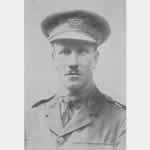Commemorated: | |||
| 1. Memorial: | Laventie Military Cemetery, La Gorgue | II. A. 15. | |
| 2. Book: | The (1921) Masonic Roll of Honour 1914-1918 | Pg.124 | |
| 3. Memorial: | The (1940) Scroll - WW1 Roll of Honour | 60A GQS | |
Awards & Titles: | |||
Family :
Son of Samuel John and Laura Rosetta Hannam, of Bristol; husband of Edith Margaret (nee Boucher), of Belle Vue, Long Ashton, Bristol, whom he married in 1909 (she was a notable tennis player who would go on to win two Olympic gold medals (1912) and reach two Wimbledon finals. After a brief time in Canada, the couple settled down at Belle View in Long Ashton.Education & Career :
He attended and was educated at Bristol Grammar School. In 1898, upon leaving school he was employed by his father in his timber business. He was recorded as Timber Merchant upon his initiation into Freemasonry in 1916.
He was an ardent Rugby player, joining the Clifton Rugby Club in 1899 and served as its Captain from 1901-3. His rugby career was cut short by injury, but went on to become the Chairman of the Bristol Cricket Association, playing for the Old Bristolian Cricket Club.
See also: Rugby History Society
Service Life:
Campaigns:
- The First World War 1914-1918, World-wide.
| Unit / Ship / Est.: 2/4 Gloucestershire Regiment |
"2/4th (City of Bristol) Battalion Formed at Bristol in September 1914 as a home service (""second line"") unit. January 1915 : attached to 2nd Gloucester & Worcester Brigade, 2nd South Midland Division, at Northampton. Moved to Chelmsford in April 1915 and on to Salisbury Plain in February 1916. Landed in France on 24 May 1916. August 1915 : formation became 183rd Brigade, 61st (2nd South Midland) Division. 20 February 1918 : disbanded in France. " |
| Action : The Battles of the Somme 1916 |
The Battle of the Somme 1st July - 18th November 1916 is inevitably characterised by the appalling casualties (60,000) on the first day, July 1st 1916. Having failed to break through the German lines in force, and also failed to maximise opportunities where success was achieved, the battle became a series of attritional assaults on well defended defence in depth. The battle continued officially until 18th November 1916 costing almost 500,000 British casualties. German casualties were about the same, and French about 200,000. The Somme could not be counted a success in terms of ground gained or the cost, but it had a strategic impact as it marked the start of the decline of the German Army. Never again would it be as effective whilst the British Army, learning from its experience eventually grew stronger to become a war winning army. The German High Command recognised that it could never again fight another Somme, a view that advanced the decision to invoke unrestricted submarine warfare in an attempt to starve Britain of food and material, and in doing so accelerated the United States declaration of war thus guaranteeing the eventual outcome. 287 Brethren were killed on the Somme in 1916.
Detail :
He was killed carrying out a night time raid on German trenches at Aubers on 5th July 1916.
Corporal H Yarrow - writing to his wife in Bristol said, "... The bullet went through and it happened on Wednesday morning 1.30 a.m. We were attacking the German troops, it was a bombing raid. A grenade dropped by my side. I was on hands and knees. I rolled quickly away. It exploded but I was not touched. It was a game getting into barbed wire, ditches etc. A German machine gun played havoc with us. I was soaked with mud and water. I ditched the gong, but I have a nice souvenir, a water bottle (copper). We were shelled heavily before and after we attacked. Another chap in my company is in the next bed. We were in their trenches 1 1/2 hours after we attacked as it was too risky to get out. We honestly looked forward to it all, with no fear whatsoever. Captain Hannam was killed in this raid. I never saw any more of him. ..."
On 5th July 1916 Captain Hannam led his troops on a bombing raid on the German trenches. According to Commanding Officer’s war diary, Capt Hannam cleared a German Bay with just his revolver and a fierce bomb fight ensued. Frank was hit in the leg with a bullet and carried too late to friendly lines, where he died of his injuries soon after. He was recommended by the CO for a Victoria Cross for his courage at enemy lines.
Frank is interred at Laventie Military Cemetery.
See also: Bristol Cathedral Commemoration
Masonic :
| Type | Lodge Name and No. | Province/District : |
|---|---|---|
| Mother : | Robert Thorne No. 3663 E.C. | Bristol |
Initiated | Passed | Raised |
8th January 1916 | 11th March 1916 | 8th April 1916 |
Source :
The project globally acknowledges the following as sources of information for research across the whole database:
- The Commonwealth War Graves Commission
- The (UK) National Archives
- Ancestry.co.uk - Genealogy, Family Trees & Family History online
- ugle.org.uk - The records of the United Grand Lodge of England including the Library and Museum of Freemasonry
Additional Source:
- Founder Researchers : Paul Masters & Mike McCarthy
- Researcher : Bruce Littley

